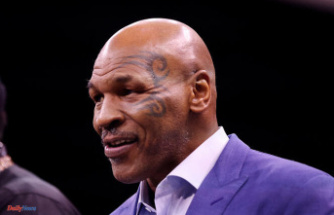There it is, the long-awaited e-mail: "We'd like to get to know you better." Anyone who has been accepted for an interview knows that a major hurdle has been cleared. But the sense of triumph dwindles as the day of the performance approaches. What can I say? What do I have to know? How do I appear confident? Such questions buzz through the mind of every applicant. However, good preparation begins one step earlier. After all, what is the first thing a potential employer notices? The look.
As banal as it sounds: If you make the wrong choice of clothes in a job interview, it will be more difficult. You only have a few seconds to convince your opponent. So how do you go about choosing the perfect application outfit?
Anyone who sits across from their dream employer wants to make an impression. A good suit or a chic blouse are basically not wrong, but in many companies they are no longer mandatory. "In start-ups or publishing houses, a blazer with high-quality trousers is also well received," says Bianca Stag, owner of the Munich style consultancy "Stilfrage".
Less strict rules also apply to jobs in the service sector. If the company is rather conservative - such as a strategy consultancy or a financial company - a particularly chic appearance is still desired.
But even here, customs have changed: clothing no longer has to be black, gray and dark blue. Strictly combed back hair in women is no longer a must. "Women are allowed to be more feminine on the business floor these days," says Sündig. In large companies, however, it is usually important to choose largely plain-colored clothing and not to combine too many patterns.
The clothing must be coordinated, even for male applicants. So the color of shoes and belt should match. If you wear silver glasses, it is best to also choose a silver belt buckle. However, ties are hardly in demand anymore.
Making a little impression is all well and good. However, applicants should never exaggerate. Status symbols such as a large gold watch should be avoided as much as possible. Expensive jewelry is only okay when applying for a managerial position. "But it should never look ostentatious," says style consultant Sündig: "Understatement is fundamentally more elegant." This applies above all to younger applicants.
But you shouldn't appear too careless either. Shoes are the most important element of an outfit, according to Sglich. Worn leather, for example, immediately devalues the overall picture. A belt should never be torn or worn out. After all: "Anyone who obviously doesn't value their clothing comes across as less trustworthy." According to Sündig, clothing thus becomes an independent means of communication.
Some style issues - such as the tie - can still be discussed today, but certain things are simply taboo. "Basically, men can do less wrong than women," says Philipp Riedel, managing director of the Munich personnel service provider Avantgarde Experts, which places around 2,000 applicants with companies every year.
According to Riedel, women not only have to pay attention to their choice of clothes. They can also make mistakes with their makeup or wear too much or the wrong jewelry. Riedel often hears from HR managers that women put on too much lipstick when applying. Plunging necklines or overly short skirts are just as bad.
The color red is difficult overall – whether on lips, nails or blouses. Because red signals either aggression or defensiveness, explains style consultant Sündig – both of which are unsuitable in an application situation. She advises subtle make-up with skin-colored nail polish and a light perfume.
Short-sleeved shirts are a big break in style for men, says Sündig: "They quickly come across as too boyish and can reveal a view of the applicant's armpits." Personnel expert Riedel also advises against hoodies and denim shirts - regardless of the industry. "These outfits just don't work," he says.
Once the outfit has been decided, the applicant can calmly set off on the journey to the company. Bite into the bread for just a moment – but then this: A thick blob of Nutella lands on the carefully selected top. What to do when the interview starts shortly after and there is no turning back?
"If you don't have a replacement with you, you should be aggressive with a blemish. If he explains at the beginning of the conversation how the stain came about, it can even make the HR department laugh,” says Riedel. "That's how you reach them on a personal level."
Riedel also advises not to dress up. Rather, the clothes should match your own style. "No recruiter wants to get a false impression of the personality of the candidate through the optics," explains Riedel. But that inevitably happens when the applicant does not feel comfortable in his outfit. He doesn't behave naturally, tugs at his unfamiliar suit pants. "That immediately attracts attention," says the HR expert.
If you are desperately standing in front of your wardrobe and are afraid of making a big mistake with every choice of clothes, Riedel gives you another tip: "You should always be aware: How do I want to look? Then the decision is much easier.”
It is also helpful to take a look at the company website, which reveals a lot about the style of the house. The correct motto for the job interview is: Always be a little smarter than the employees on the website.
If that doesn't take away the uncertainty either, a call to the potential employer's human resources department will. A surprising number of applicants use this opportunity to be on the safe side with the dress code for the interview.
Read more articles from our guide series on the subject of job interviews here:
This article was first published in May 2019.












